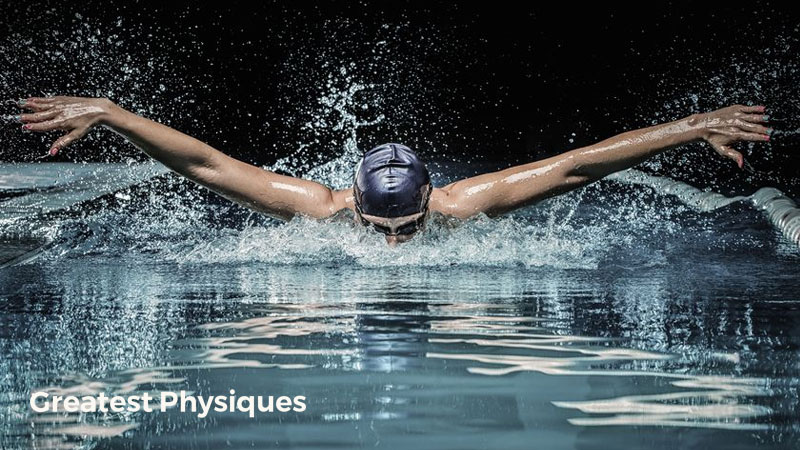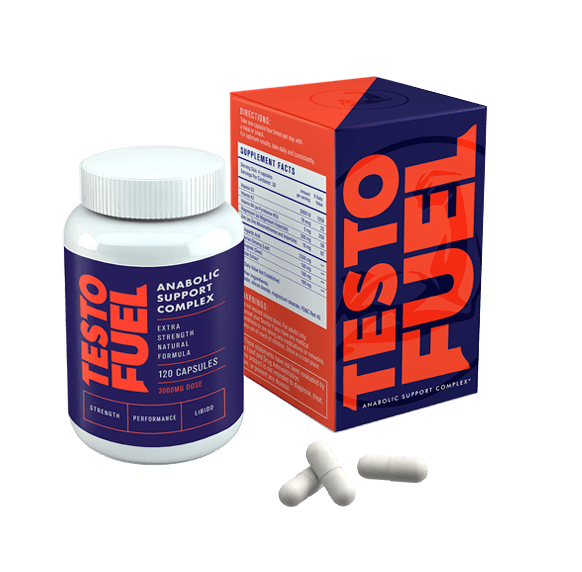
Get strong and powerful, build lean mass and get shredded like an athlete.
You’re here to build speed, boost velocity, power and mobility.
You want to get strong.
Athlete strong.
Designed by our team of expert and experienced coaches and trainers, in this plan you’ll train just like the pro’s to achieve all of your goals and more.
You’ll be following a periodized plan that takes you through blocks of muscle growth, strength training, power and conditioning training.
It’s an advanced program for those that’re willing to grind out that last rep and go the distance to carve out a physique that’s ready for the stage… or the athlete track.
If you want to look and perform as strong as your favorite linebacker, or jump as high as a power forward, this is the program to get you there.
What does this program cover?
| Goal: | Muscle mass, strength, power, fitness |
| Aimed at: | Intermediate-advanced |
| Program duration: | 6 weeks + |
| Workout duration: | 30-60 minutes |
| Equipment needed: | Barbell, dumbbell, , body weight, resistance machines |
Train Like an Athlete
Pro athletes have a pretty cool job.
Early morning gym training, nutritious breakfast, track practice, chill time, lunch, power nap, maybe another practice session or technical workout, evening meal and more chill time.
And then they go again the following day.
Sounds like the perfect life right?
Hell yes.
Their routine is designed to set them up for success.
And while you can’t exactly follow every single detail of a athlete’s routine (your manager might not be happy that you ditch work to get a sports massage and have a high-quality snooze instead), you can certainly follow their workout program.
Every sport is different. But some athletic characteristics are the same
Based on the skills and physical attributes needed in sport, each athlete training program is different too.
Sprinters focus on horizontal vector power. Basketball players work hard to have a high vertical jump for blocking and rebounding. And invasion sport players need to be agile, lean, fast and focused.
But there are many similarities between different athletes training programs. Particularity the ones that focus on the key attributes:
- Strength
- Speed
- Power
- Conditioning
- Performance
And let’s be right – athletes look phenomenal too. Strong looking shoulders, lean abs and shapely arms and legs.
Athletic body workout- building champion performers
To excel in any sport you’ve got to work hard.
You’ve got to get your head down, grit your teeth and not be afraid to get dirty in you workouts.
If your goal is to get jacked and strong then you’re going to need the right tools.
And that’s where we come in with this explosive athlete conditioning plan.
Here’s what we’re focusing on with this workout schedule:
1 – Strength
Strength is a key fundamental of sport. You never here “he’s too strong” or “she’s far too strong for her sport”.
Simply put – strength is the foundation of athletic success.
Get strong and you’ll find that other aspects improve too. You’ll be faster, have better control of you body, generate more precise power and reduce fatigue too.
And you’ll look great too.
2 – Speed
If you look at top-of-their-game athletes, they all have one thing in common.
They’re quick.
Whether you want to be a better track and field athlete, baller, cyclist, skater or swimmer, speed is key.
Acceleration and maximal top speed are only achieved through the right training. As one of the main components of fitness, speed goes hand in hand with strength.
Combine the two and you’re a straight-up athlete.
3 – Muscle mass
Having a jacked physique isn’t necessary for some sports.
But success leaves clues, and you might as well look the part too, right?
The best athletes in the world don’t just perform well. They look great too.
Single digit body fat, muscular legs and a broad upper body tell a story of someone that takes their sport seriously.
And that’s what we’re going for here.
4 – A healthy diet
Although it’s not part of this training program, following a nutritious eating plan is a must for any athlete.
This program suits a calorie surplus diet.
Hitting the gym on a regular basis requires the right fueling. There’s no room for a low-calorie diet here – you’ll need enough energy to get you through these grueling sessions.
Plenty of lean meats, vegetables and high-carb foods such as oats, multi-grains and potatoes.
You can’t get to athlete status if you’ve not got enough fuel in the tank.
Athletic Body Workout Plan
This advanced athlete program takes all of the key attributes of a successful sportsperson and ramps up the workload to get you faster, stronger and more powerful.
It suits both men and women, but requires at least a decent base of fitness and conditioning,
If you’re a beginner this program won’t suit you that well. It’s based around some pretty tough protocols that need agility, balance and co-ordination.
But if you’ve been training hard in the gym for the last few months it’ll really suit your needs.
Based on a 3-5 day schedule, you’ll cover all bases as you use cardio, strength and pure conditioning tools to get you in top form for your sport.
Periodize your training to make big gains
Part of being an athlete is planning your training in advance.
And that’s what we’re doing right here.
There’s no turning up at the gym and jumping on the first bit of equipment that’s free. We’re all about maximizing results through clear and direct programming.
Periodization is a technique used by athletes to achieve peak performance for an event or even all-season.
While there are lots of different ways to periodize (even top level coaches debate which is best), we’re going to be using linear periodization.
In the linear model you’ll start off with higher volume and lower intensity workouts, and climb your way up to higher loads with lower volume as the weeks pass.
Here’s how your periodization plan looks:
- Block 1: Muscle growth and foundation conditioning phase
- Block 2: Strength phase
- Block 3: Power phase
In the original literature about periodization, these blocks were called mesocycles.
You can run each phase for as long as you want to. 6-12 weeks works well because it gives you time to immerse yourself in each individual goal, without becoming bored or stale.
Each phase has its own goal but also helps to build a foundation for the block that follows it.
It’s a productive, progressive way of planning that really gives targeted results.

Training Tip: Have a few days off after you finish each mesocycle to recover and allow your body to fully adapt and restore.
The Athlete Training Program
Combining different athletic goals can be tricky. There are so many factors to consider that you might not know where to begin.
This is why only top level coaches use periodization techniques.
From knowing which exercises work best, to exactly how much weight to use for each exercise or what constitutes high volume. Even knowing which rep ranges to use in each phase can leave you scratching your head.
But you don’t need to worry any longer because it’s all laid out for you here.
Muscle growth and foundation conditioning phase
By focusing on high volume sets and moderate-high loads you’ll lay down some rapid muscle growth.
Using full body workouts you’ll be able to hit all for your major muscles 2-3 times per week, and find a great balance between foundation strength, muscle endurance and cardio efficiency too.
This stage doesn’t even have to be specific to your sport.
Whether you need to develop a great vertical jump or you’re here because you want to improve your speed – this plan gets the ball rolling regardless.
Aim to work at 8-15 reps per set with a weight that is challenging. As soon as you can squeeze out 15 reps you need to up the weight you’re using. 3-4 sets per exercise will have your muscles screaming… but the results will be worth it.
| Number | Session 1 | Session 2 | Session 3 |
|---|---|---|---|
| 1 | DB Shoulder press | DB Lateral raise | BB Overhead press |
| 2 | Leg press | Goblet squat | Leg extension |
| 3 | Lat pulldown | Assisted pullups / jump pullups | Straight arm pulldown |
| 4 | Lying leg curl | Dumbbell deadlift | Leg curl |
| 5 | BB Bench press | DB Flyes | Incline dumbbell press |
| 6 | DB Split squat | DB bicep curl | DB Step ups |
| 7 | Seated row | Cable triceps extension | Low pulley row |
Strength phase
To get strong you’ll need to lift heavy. In this second cycle of training you’ll be upping the loads and reducing the rep and set count.
The stimulus of a strength block isn’t to promote muscular growth. It’s to use the previous phase as a primer to target the nervous system to improve maximal strength.
There’s more room here for complex lifting patterns – you’ll not find a bicep curl or a triceps extension here because this is where the big pulls, presses, squats and deadlifts come in.
This block is based on 3 days per week but is much more challenging than the muscle growth phase.
Aim to work with a weight that is as heavy as you can go without a loss of form. And again, as soon as you can squeeze out 8 reps you need to up the weight. More isn’t always better when you’re training for strength – keep to the right number sets per exercise and you’ll find that it’s enough to ramp up your strength without you becoming overly fatigued.
Day 1
| Number | Movement | Reps and Sets | Rest period |
|---|---|---|---|
| 1 | Back Squat | 5 x 5 | 3-5 minutes |
| 2 | Overhead Press | 3 x 6 | 3-5 minutes |
| 3 | Pull-up | 3 x as many reps as possible | 3-5 minutes |
| 4 | Reverse hyper | 3 x 8 | 2-3 minutes |
Day 2
| Number | Movement | Reps and Sets | Rest period |
|---|---|---|---|
| 1 | Power clean | 5 x 3 | 3-5 minutes |
| 2 | Bent over row | 3 x 8 | 2-3 minutes |
| 3 | Bench press | 3 x 5 | 3-5 minutes |
| 4 | Rack pull | 3 x 3 | 3-5 minutes |
Day 3
| Number | Movement | Reps and Sets | Rest period |
|---|---|---|---|
| 1 | Deadlift | 5 x 6 | 3-5 minutes |
| 2 | Narrow bench press | 3 x 6 | 3-5 minutes |
| 3 | Glute-ham raise | 3 x 5 | 3-5 minutes |
| 4 | Weighted neutral grip pull-up | 3 x 6 | 3-5 minutes |
Power phase
To dial in on power and force production you’ll need to work around moderate intensity and quality, rather than quantity or excess loads.
Speed and power isn’t about traditional strength training exercises either. Instead, the focus is on ballistic movements that allow you to transfer loads (and your body) at high velocity.
Too much weight and you’ll have to slow down – and that’s counterproductive.
There’s a big neural demand with power training. You’re really testing your nervous system, and you’re not that likely to feel muscle soreness.
Follow this workout 2-3 times per week for maximum effect.
Power training uses specific exercise selection and a low volume approach. The intensity is very high, even though you’re not using much weight.
| Number | Movement | Reps and Sets | Rest period |
|---|---|---|---|
| 1 | Power snatch | 5 x 6 | 3-5 minutes |
| 2 | Medicine ball rotational throws | 3 x 6 (per side) | 3-5 minutes |
| 3 | Box jumps | 6 x 4 | 3-5 minutes |
| 4 | Overhead medicine ball throws with squat catch | 3 x 8 | 3-5 minutes |




Comments are closed